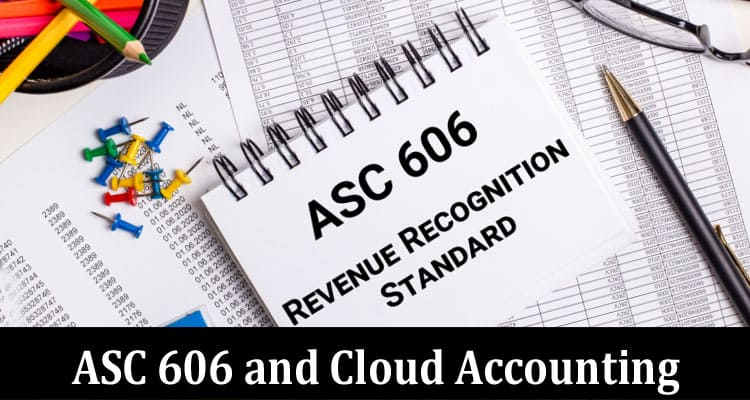In the ever-evolving landscape of finance and accounting, businesses are continually seeking ways to streamline processes, improve accuracy, and stay compliant with regulatory standards. ASC 606, the revenue recognition standard issued by the Financial Accounting Standards Board (FASB), represents a significant shift in revenue recognition practices.
Meanwhile, cloud-based accounting software has emerged as a powerful tool for financial management. When combined, ASC 606 and cloud accounting create a synergy that is revolutionizing the way businesses handle revenue recognition and financial reporting.
ASC 606: A Brief Overview
Before delving into the partnership between ASC 606 and cloud accounting, let’s briefly understand what ASC 606 entails. ASC 606, also known as Accounting Standards Codification Topic 606, outlines a comprehensive, principles-based approach to revenue recognition. It provides guidelines for businesses to follow when recognizing revenue from contracts with customers, ensuring consistency and comparability across different industries.
Challenges of ASC 606 Implementation
Implementing ASC 606 can be a complex process. It requires businesses to:
- Identify contracts with customers
- Assess performance obligations
- Determine transaction prices
- Allocate transaction prices to performance obligations
- Recognize revenue as performance obligations are satisfied
The transition to ASC 606 involves careful analysis of existing contracts, systems, and processes, which can be time-consuming and resource-intensive. This is where cloud accounting steps in to ease the burden.
Cloud Accounting: A Modern Solution
Cloud accounting offers several advantages, including accessibility, scalability, and real-time insights. These features align perfectly with the needs of ASC 606 implementation.
Seamless Collaboration and Data Sharing
One of the key challenges in ASC 606 adoption is the need for cross-functional collaboration. Different departments within an organization may need to work together to gather contract data, assess performance obligations, and determine transaction prices. Cloud accounting platforms facilitate this collaboration by allowing multiple users to get access to and update financial data simultaneously. This streamlines the overall process and reduces the risk of errors due to data silos.
Real-Time Financial Insights for Compliance
ASC 606 requires businesses to provide more detailed and comprehensive financial disclosures. Cloud accounting software provides real-time financial insights, making it easier for businesses to generate the necessary reports and disclosures accurately. This cuts downthe risk of compliance errors and ensures that financial statements are in line with ASC 606 requirements.
Scalability for Changing Business Models
Many businesses may need to adjust their revenue recognition practices to comply with ASC 606. This can be specifically challenging for companies with rapidly changing business models or those undergoing mergers and acquisitions. Cloud accounting solutions offer scalability, allowing businesses to adapt their accounting processes to align with ASC 606 as needed.
Automation and Data Accuracy
ASC 606 compliance demands precision and accuracy in revenue recognition. Manual data entry and calculations can introduce errors and increase risks of non-compliance. Cloud accounting platforms often include automation features that can streamline revenue recognition processes, reducing the likelihood of errors and ensuring data accuracy.
Data Security and Audit Trails
Ensuring data security and maintaining an audit trail are crucial aspects of ASC 606 compliance. Cloud accounting solutions typically come with robust security measures, including data encryption, access controls, and audit trails. These features provide the necessary safeguards to protect sensitive financial data and ensure transparency in compliance efforts.
The Perfect Partnership
In conclusion, ASC 606 and cloud accounting are indeed a perfect match for modern finance. ASC 606 ushers in a new era of revenue recognition standards, while cloud accounting software offers the tools and capabilities needed to navigate this change seamlessly. By harnessing the power of the cloud, businesses can not only achieve ASC 606 compliance but also enhance their overall financial management practices.
As the business world continues to evolve, embracing ASC 606 and cloud accounting as a unified solution is a strategic move that ensures accurate revenue recognition, compliance with regulatory standards, and improved financial reporting. The synergy between these two elements empowers businesses to thrive in an ever-changing financial landscape.
So, whether you’re a small startup or a large enterprise, consider adopting ASC 606 in conjunction with cloud accounting to streamline your revenue recognition processes, enhance data accuracy, and position your organization for success in the modern era of finance.


